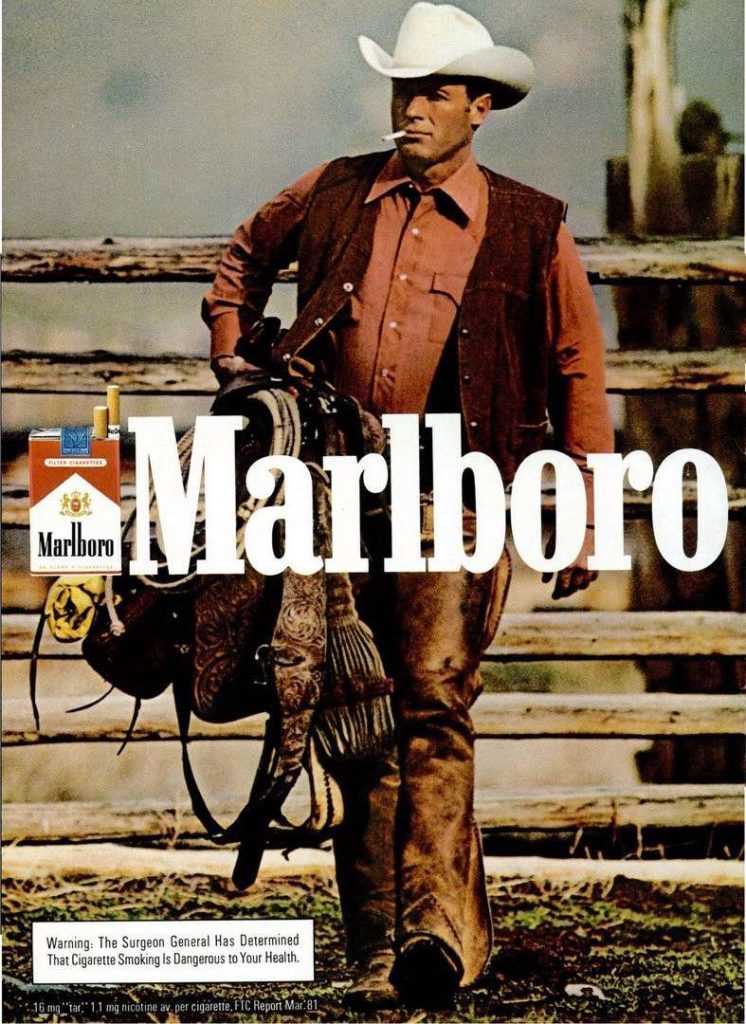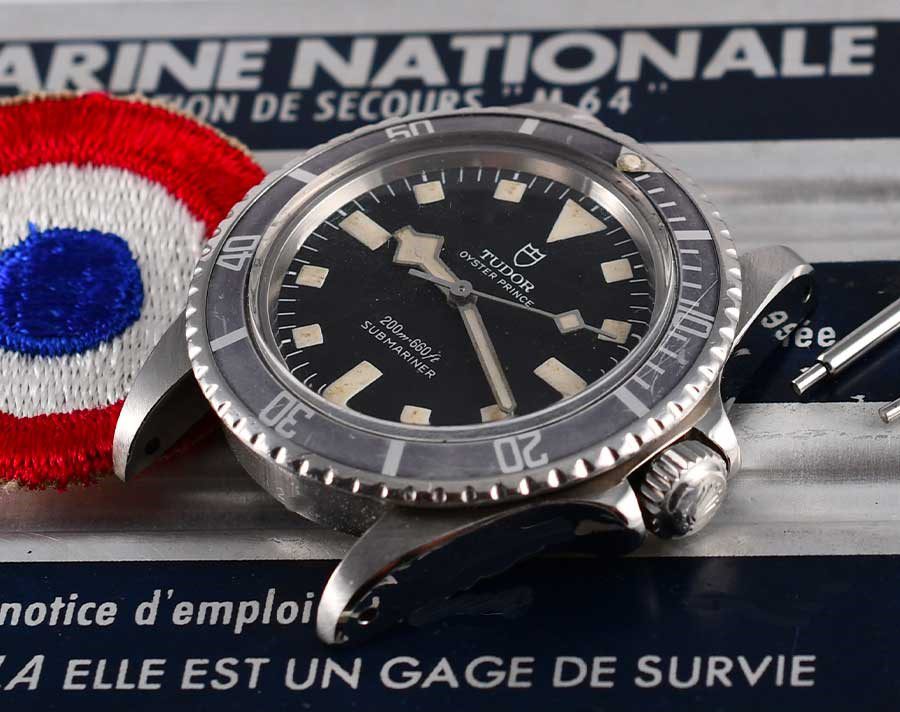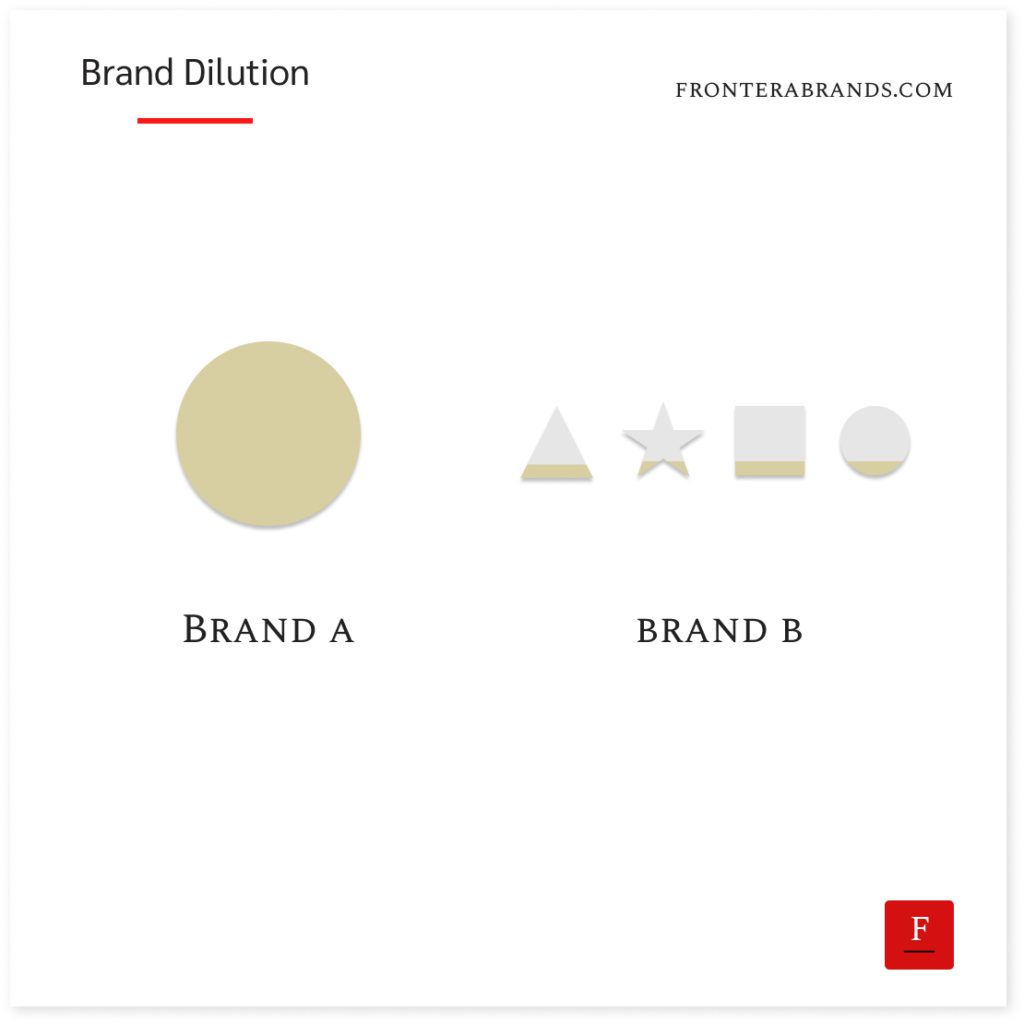Why more is less
In 1954, Philip Morris created one of the most famous characters in advertising history.
The Marlboro Man.
Marlboro was a struggling product before the campaign.
It was advertised as a women’s cigarette.
But increasing health concerns and public pressure pushed them to look for a new positioning.
They needed a way to keep people smoking despite being aware of the risks.
So together with advertiser Leo Burnett, they created the Marlboro Man.
The aim was obvious.
It was not about selling cigarettes.
It was about selling the lifestyle.
After all, cool and free cowboys don’t care about anything — including health concerns from government officials.

It was a big positioning switch.
But it worked.
Philip Morris put Marlboro as the “men’s cigarette” in people’s minds.
And Marlboro became the best-selling tobacco brand in the world.
But as years passed, new trends started in the tobacco industry.
Like light cigarettes and menthols.
Phillip Morris saw these trends gaining traction.
And they felt obliged to take action using their strongest brand.
So they created different variations of Marlboro — like Marlboro Lights and Menthol.
Remember Coca-Cola’s “New Coke” fiasco?
Marlboro Lights and Menthol were not sudden failures like New Coke.
But they stopped the fast growth of Marlboro.
You know why?
Because they diluted Marlboro’s brand equity.
It was not a “men’s cigarette” anymore.
The actions didn’t match the brand’s promise.
Marketing legend Jack Trout summarized what Marlboro’s extension implied for smokers in a sentence:
“Real cowboys don’t smoke menthols and ultra-lights.”
So Philip Morris took a step back.
And they refocused on the classic Marlboro with ‘Marlboro Country’ ads to keep growing.
Why less is more
In 1936, Rolex’s founder Hans Wilsdorf decided to act on an idea he had in mind.
He wanted to make a cheaper version of Rolex for a while.
Still high-quality watches, but more affordable.
Now, most people would do the obvious.
Create a new line of Rolex and call it ‘Rolex Essentials’ or something.
In the end, why not take advantage of Rolex’s name?
Well, Wilsdorf didn’t fall into this trap.
Instead of creating a Rolex ‘Light’ collection, he created a separate brand — Tudor.
And guess what happened?
First, Rolex protected its brand equity and stayed as a luxury brand.
“Having a Rolex” didn’t change its meaning — unlike smoking a Marlboro.
Second, Tudor created its own story.
Its reliability and lower price attracted navies (including the French Navy) in the 60s.
And Tudor became a household name.
Demand for Tudor watches is so high these days; the prices of some models compete with luxury watch brands.

The tyranny of brand extension
The pressure for constant growth brings a challenge to every successful company.
You feel the need to expand.
So you start putting your logo into new products, features, and services.
Using your existing brand seems like a low-hanging fruit.
But it’s a fallacy.
Ironically, you lose the brand power that made the company successful in the first place.
It becomes just another company for customers.
That’s brand dilution.

So how can you avoid brand dilution?
Here are two key points.
Two ways to avoid brand dilution:
1. Stay specific
Samsung, Mitsubishi, LG…
Most conglomerates are good examples of diluted brands.
They put their logo into everything they produce.
Cars, fridges, industrial tools…
And guess what happens?
Customers don’t know what they stand for.
Owning an Apple device or Nike shoes gives you an identity.
It has a meaning.
But what does owning a Samsung mean?
Nothing.
So these weak brands end up competing on price in every product line.
It becomes a race to the bottom.
They stay alive only because of their other moats (like network effects or distribution) that they built thanks to being specialized early on.
Now, one more thing.
Brand dilution can happen even when you have one product.
In SAAS, it happens with feature creep.
Apps keep adding features and try to become a tool for everything.
They lose specificity (and meaning) for customers.
In service businesses, it happens by offering lots of related services instead of becoming the best in one.
But we talked about value tradeoffs last week.
Weaknesses can be useful when you use them right.
When you show what you don’t have, you actually strengthen your brand’s main promise.
So stay specific to build (and keep) your brand power.
2. Avoid wrong associations
Strong brands stand for something.
They have values.
You might like what they stand for.
Or you might hate it.
But they always make it clear.
Here’s one example.
A few years ago music producer deadmau5 decided to modify his Ferrari.
He changed the color, put a huge picture of Nyan Cat on the side, and removed Ferrari’s iconic logo.

You know Ferrari’s response?
They sent a cease and desist order for deadmau5.
And they (allegedly) put the artist on their blacklist to prevent him from buying a Ferrari again.
Turns out every new Ferrari owner signs a contract.
So you can’t do certain things with a Ferrari even when you own it.
And Ferrari enforced it against deadmau5.
I know, sounds extreme.
But you see how intentional Ferrari is with the brand.
Ferrari’s designers and engineers carefully design every model to be special.
It’s what they stand for.
And they do whatever it takes to protect the car — hence the brand.
So pay attention to every customer touchpoint.
Social media posts, franchises, or the quality of packaging…
Every wrong association in the eyes of customers will dilute the brand.
And reduce the brand’s believability.
Remember the Halo Effect.
The more you show what you stand for in every detail, the stronger your brand becomes.
–
Enjoyed this article?
Then you’ll love the How Brands Win Newsletter.
Get the “7 Positioning Sins That Cost B2B Brands Millions” guide when you join. It’s free.
